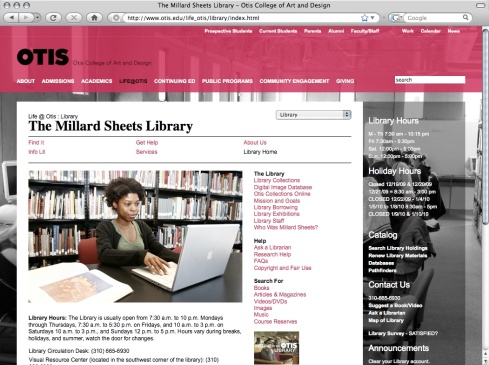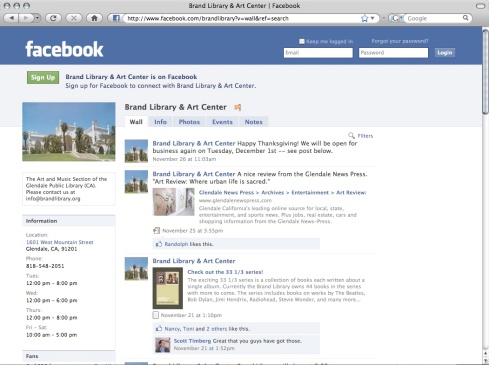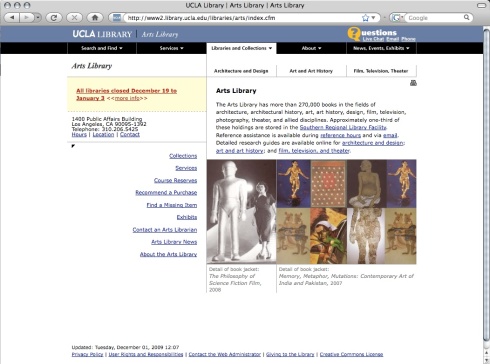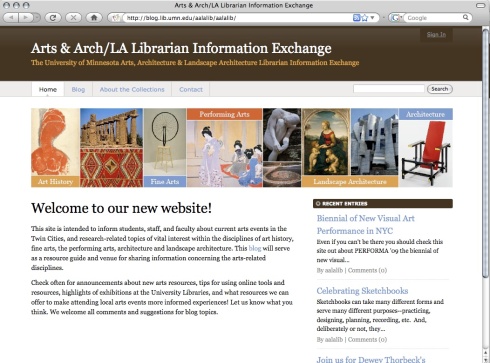In the Spring 2009 issue of Art Documentation, in an article titled “Archiving 2.0: Problems, Possibilities, and the Expanding Role of Librarians,” Sue Maberry, Director of the Library and Instructional Technology at Otis College of Art and Design, Los Angeles, California addressed the archival issues associated with web 2.0. (Full article available through subscription only. You can read the abstract here.) As more and more content is created on the web, how do we preserve it? Many of these technologies are meant to be ephemeral, so should we even attempt to archive them? I think these are issues a lot of libraries and archives struggle with, but few resolve.
For Otis College of Art and Design, the key was to put the library at the forefront of new technologies and teaching and learning initiatives at the school and to begin archiving right from the start. A few grants and some brilliant, techie, fresh-out-of-library-school librarians also helped the process.
In her article, Maberry writes:
“The TLC funding excited everyone. Faculty and students created and used e-portfolios. Some began experimenting with wikis…Blogging was embraced…Flash learning objects were created. We acquired land in Second Life and began building. Students designed virtual art exhibitions…Art historians and social scientists experimented with audio and enhanced podcasts…Many faculty members became interested in making video “learning objects” for their courses.”
They really did it all. And with tools like CONTENTdm and DIGIcation, they have been able to preserve some of this content.
All of this is great, but my question is, how did they get the students and faculty to participate? What did they do to market the initiatives? When I go to the Otis College of Art and Design Library (aka The Millard Sheets Library) website now, there is no mention of these web 2.0 activities. There is, however, a Meebo chat widget and a YouTube tour of the library (see video below), two more web 2.0 technologies. (Is there anything web 2.0 the Otis College of Art and Design Library hasn’t experimented with?)
It would appear that while the library is the key player in the web 2.0 exploration at Otis, the initiative supports the entire school. The undergraduate admissions page includes links to Flickr, Facebook, YouTube, and Twitter. And the webpage on Technology and Learning is where they’ve hid the rest. Perhaps they would get even more interest by putting some of these links on the Library’s homepage.










